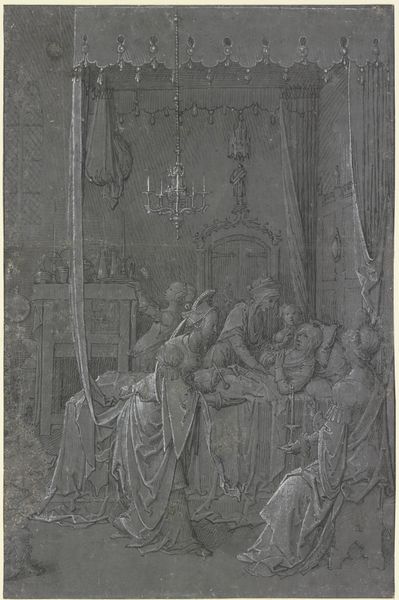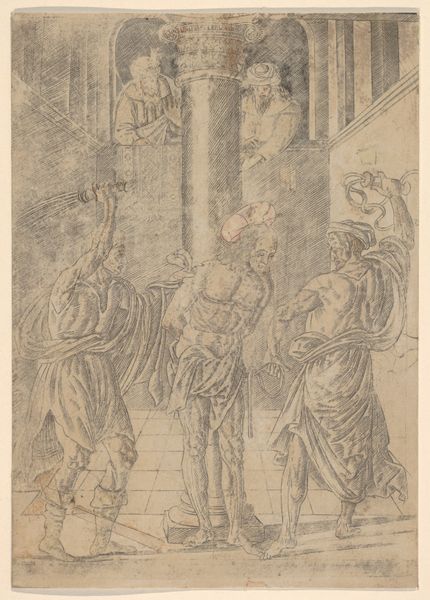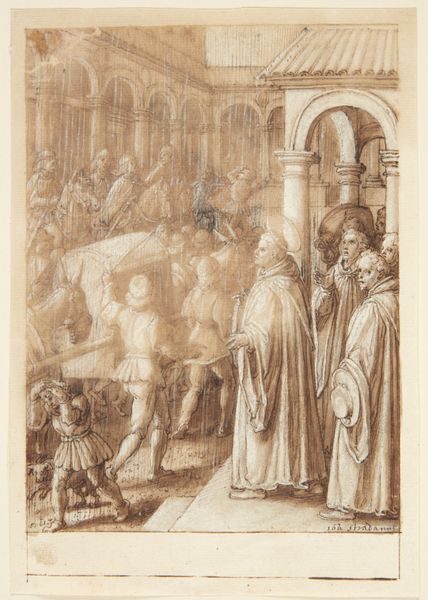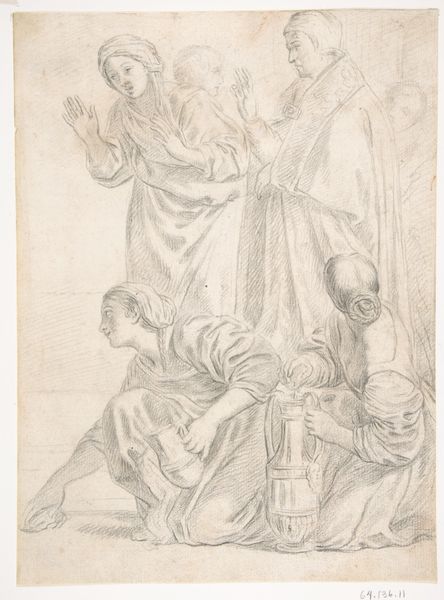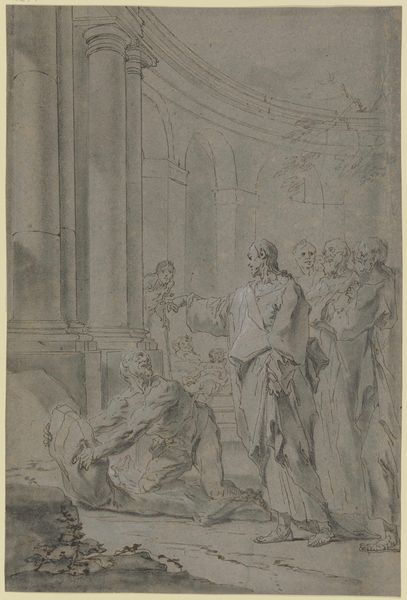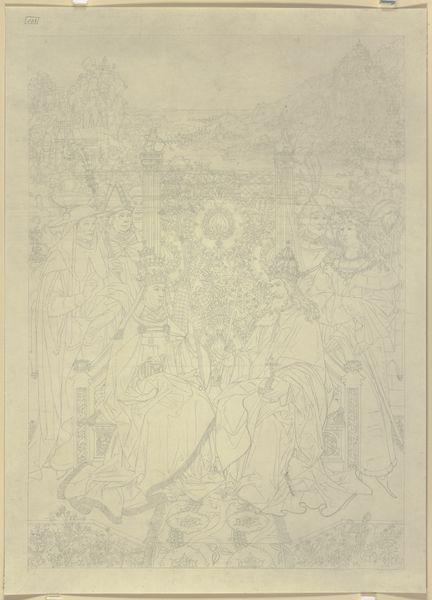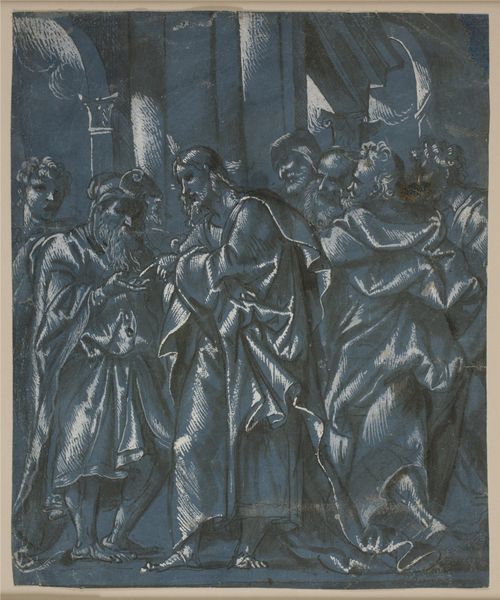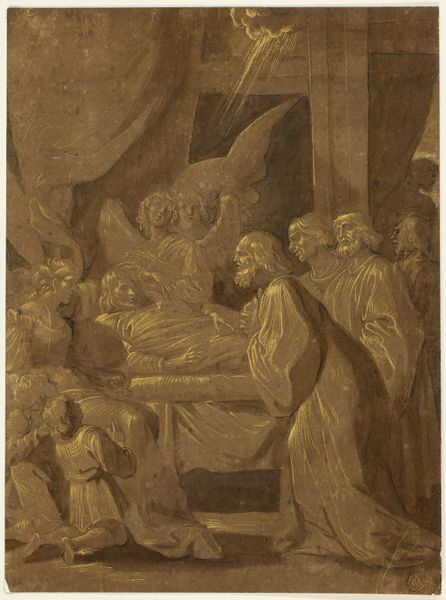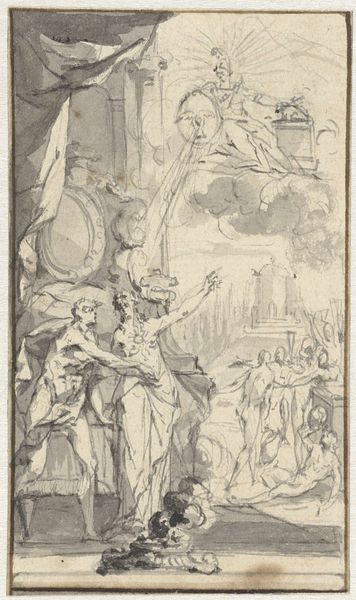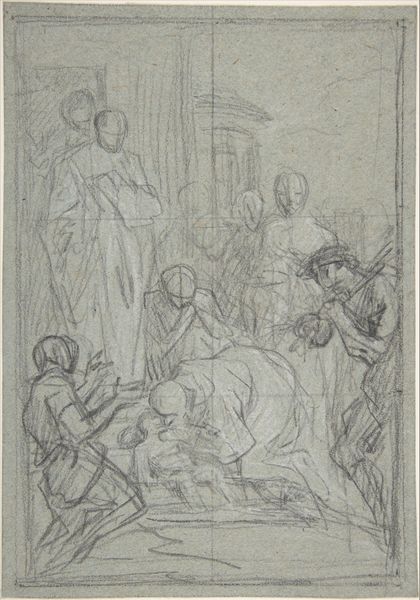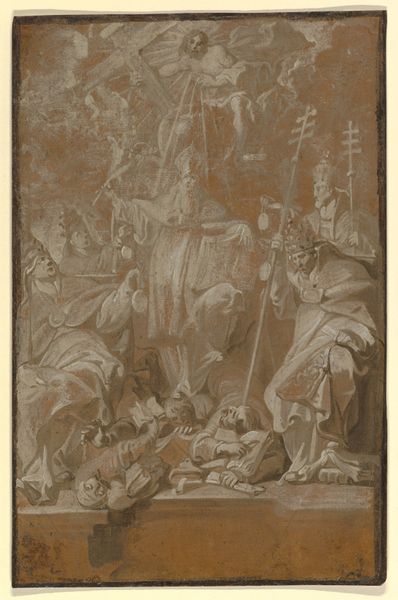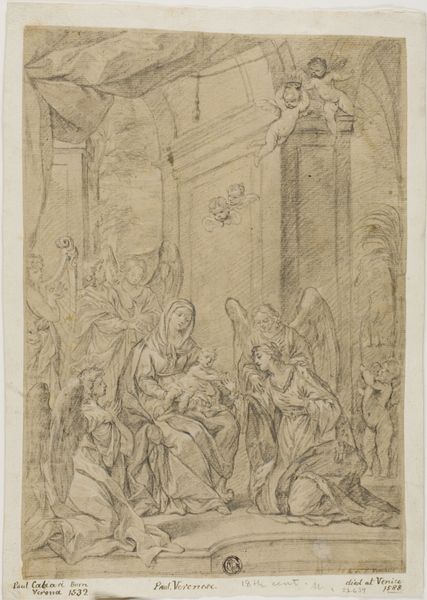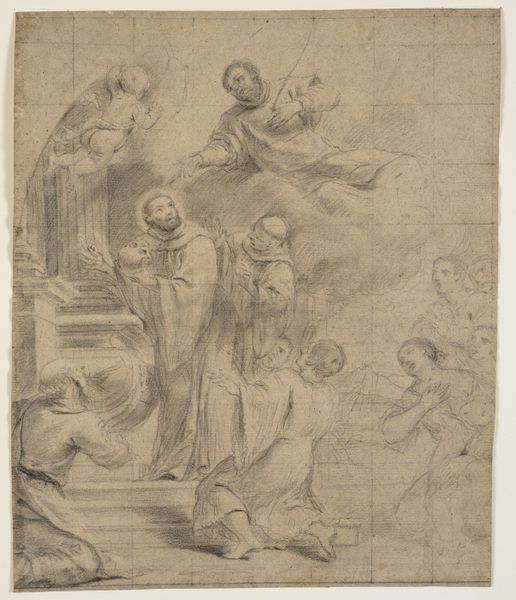
drawing, chalk
#
portrait
#
drawing
#
baroque
#
figuration
#
chalk
#
14_17th-century
#
history-painting
Copyright: Public Domain
Curator: I am immediately struck by the drawing’s quietude, its almost somber stillness. Is this how power always feels, cloaked in ritual and hushed reverence? Editor: This drawing, titled "Ordination of a Bishop," is by Eustache Le Sueur. It's a chalk drawing held here at the Städel Museum and looks like it could have been made sometime in the 17th century. We can classify it as Baroque in style, focusing on figuration within a history painting theme. Curator: The soft lines, the way the chalk seems to breathe… it gives such a sense of sacred space. See how the light seems to pool around the figures, like a benediction. But there's also a formality about it; it feels less about individual spirituality and more about institutional power, what do you make of it? Editor: Yes, the light and shadow certainly create a sense of drama typical of the Baroque. The composition is very structured, almost theatrical. We see the clear hierarchy of the figures, carefully arranged around the central figure of the kneeling bishop. It creates a visual order reinforcing the ceremony's importance. Note how the orthogonals converge, directing the gaze toward the altar, subtly embedding it. Curator: That's a great detail about directing gaze, I think it emphasizes just how meticulously crafted and deliberate the whole piece is. It is really kind of amazing what chalk on paper can convey here, what an event this almost certainly would have been. Editor: Precisely! It’s more than just a representation; it’s an encapsulation of a moment steeped in historical and religious significance. I love to see such rich history so economically represented! Curator: Looking closely, it's as if the chalk itself becomes a symbol, delicate and impermanent, yet capable of rendering something with such enduring symbolic weight. Editor: A beautiful thought, almost alchemical. Curator: Absolutely. I walk away from this piece struck, I suppose, by the emotional restraint it conveys while holding a rather immense emotional payload. Editor: For me, the value in works like this really lies in their invitation to understand power structures, religious rituals, and how art visually manifests and codifies complex ideas.
Comments
No comments
Be the first to comment and join the conversation on the ultimate creative platform.
